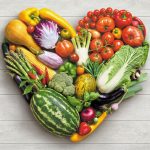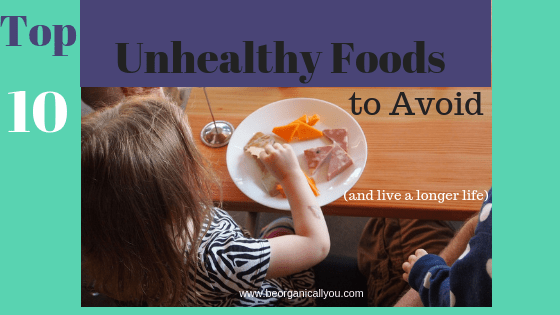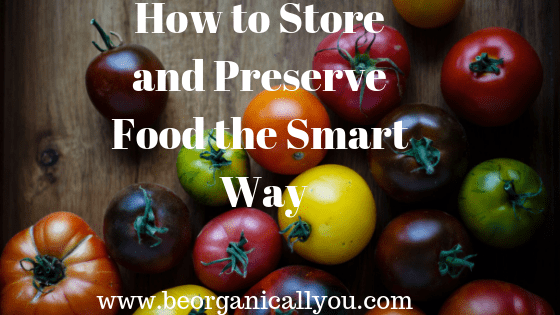Healthy Eating: The #1 Method for Eating {Best Plan}

Healthy Eating Plan
Plan for Healthy Eating
I’ve been working hard at making sure I practice what I preach and being an example to others! Most of the time I do well but every now and then….
Which is why I decided to write this post. I understand your struggles. Healthy eating can be hard work but you CAN do it! It can be done! It’s a day by day process. The goal is for the day to day process to become a regular habit for you, and then a lifestyle. The #1 way to eat healthily is to develop a healthy eating plan.
Eventually, you can achieve your health goals. Just be consistent and mindful of what you’re doing and putting into your body every day. What helps me is taking a moment whenever I am about to reach for something not so healthy.
When you feel those cravings coming on think about it first. Give yourself 5 mins to think about what you’re doing. If you still want whatever it is you are craving after that, then eat a small portion.
Surprisingly though, most times you will find that you no longer want whatever it is you thought you wanted at the time. Or at the very least, you don’t feel like you’re going to go stir crazy if you don’t eat it in those 5 mins.
Just because a food is labeled “natural” or “organic” does not mean it’s truly healthy. What good is a food that is organic if it’s loaded with sugar or other processed ingredients and additives? Make sure you are reading the labels of the food you buy. Healthy eating requires healthy choices.
When ingredients are listed they usually list what’s most in the item first and it goes from the most to the least. So, when you find an item labeled as organic still be sure to check the label. Having said that, buy organic whenever possible. You do not want processed food in your life if you can help it.
Have you ever noticed how fresh fruit and vegetables don’t have labels? That’s because what you see is what you get. Lots of fresh fruit and vegetables should be a part of your eating routine every day. Juicing is a great way to get your fruits and vegetables on a daily basis without feeling overwhelmed with having to eat so much.
Having a routine and plan for eating healthy is crucial to forming healthy habits and a lifestyle. Here’s some information that will help you along your health journey.
Tips for Saving Money on Organic Food
Avoid Impulse Purchases:
Plan your meals ahead of time and do a thorough check of your pantry before you leave to shop. This way you’ll be less likely to buy on impulse and waste money. Make a list and stick to what you need.
Eat Before Going to the Store:
We’ve all done it. We go to the grocery store when we’re hungry and leave with everything in sight. Stores know what they are doing. They tempt you with displays, tastings, and aromas. Go to the store when you don’t have a lot of time. That way you won’t have time to explore and look around. Go in, get what you need, and leave. You’ll leave with your budget intact!
Use Coupons:
Make it a habit of clipping coupons each week. In fact, do one better and go to the grocery stores that you shop online and sign up for their newsletter. You will then get coupons, discounts, and special offers via email.
Buy in Bulk:
Do you have a Sam’s or Costco in your area? They are good places for finding bulk items. You can stock up on things that have a long shelf life such as beans and nuts. Sam’s even has all-natural non-GMO chicken as well as grass-fed beef.
Join a Co-op:
Co-ops are a great way to get delicious, fresh food at low prices. Some companies have even started offering co-op programs to their employees. It’s catching on!
Shop Seasonally:
When food is in-season of course the cost will be lower. Learn to eat around what’s available and in season instead of paying high prices for food just because you want it. If you know your favorite item is only in season for 3 months buy plenty of it and then freeze the rest for when it’s not in season.
If you love cherries but know they aren’t available in the winter months to make some cherry tarts or some other treat and freeze them for a couple of months down the road when you want a cherry treat but can’t find them anymore.
Shop Locally:
Supporting local farmers, farmer’s markets, and suppliers are great ways to find fresh, delicious food all while staying in your budget. By the way always opt to buy organic when it comes to the following: -Apples, celery, bell peppers, strawberries, grapes, nectarines and peaches, spinach, lettuce, cucumbers, potatoes, greens, and blueberries. These foods typically have the highest pesticide residue.
Start a Garden:
One way to guarantee you know what you are eating is to grow your own food! This way you have control over what’s in your food and know that you are eating healthy. Make gardening fun for the whole family and pass the tradition down each generation.
If you don’t have a backyard start with some pots and grown produce, herbs, and more on your kitchen tabletop, balcony, or window.
Find Perishable Items:
This suggestion may not be popular with some, but for those that don’t mind, finding perishable goods is a great way to save. Ask the store manager about delivery dates and what’s left over each week for smart choices and options. Be sure to check expiration dates.
Plan Ahead
An essential aspect of healthy eating is to keep your pantry stocked with cooking staples. In fact, I would say stocking your pantry and meal planning are two of the most important aspects of creating a healthy routine for success.
Pantry Essentials:
Every pantry should have the following fundamentals always on hand. If you keep your pantry stocked with essential cooking will be simple and easy.
One of the biggest complaints I hear about cooking is not always having the ingredients you need on hand and having to go to the store to get them. Well if you keep your pantry on fleek (ha), you won’t have to worry about that.
Here’s a list of essentials to help you out (buy organic if possible):
Spices and Herbs: sea salt, black pepper, oregano, basil, parsley, basil, thyme, sage, rosemary, garlic powder, garlic salt, onion powder, cumin, chili powder, smoked paprika, turmeric, curry powder, cayenne, crushed red pepper, cinnamon, ginger, nutmeg, cloves
Oil and vinegar: unrefined coconut oil, extra virgin olive oil, sesame oil, apple cider vinegar, rice wine vinegar, balsamic vinegar, red wine vinegar
Flour: brown rice flour, quinoa flour, oat flour, almond meal, spelt flour, or organic unbleached flour
Canned and boxed goods: coconut milk, tomato paste, diced tomatoes, tomato sauce, vegetable bouillon, salsa, sundried tomatoes, chicken broth, beef broth, beef, chicken, and vegetable stock
Condiments: ketchup, mustard, and mayo, tamari, liquid smoke, Worcestershire
Nuts and Seeds: almonds, raw cashews, walnuts, pecans, hemp seeds, chia seeds
Whole Grains: quinoa, brown rice, rolled oats, whole grain pasta
Legumes: lentils, chickpeas, black beans, pinto beans, navy beans
Natural sweeteners: pure maple syrup, raw honey, dark chocolate chips, coconut palm sugar
Nut butter: almond butter, peanut butter
Other basic items that are always handy to have at hand, have a longer shelf life, can be stored in a cool dry space and don’t need refrigeration are root vegetables including:
- Onions, Potatoes, Carrots, Fresh Garlic and Ginger
Healthy Eating
There are many simple ways to plan, enjoy, and even stick to a healthy diet. Your health journey should be about a healthy lifestyle, not trying to stick to some diet regimen or restrictions.
Healthy eating is not about strict dietary limitations, staying a certain weight, or depriving yourself of the foods you love. Rather, it’s about feeling good, having more energy, and improving your health.
All the conflicting information regarding health, nutrition, and diet can certainly be overwhelming. But by using these simple tips, you can eliminate the confusion and learn how to create a healthy environment and plan.
Just by eating more fresh fruits and vegetables, cooking meals at home, increasing water intake, and reducing your intake of sugar and refined carbohydrates you can improve your health tremendously.
Building a Healthy Diet and Setting Yourself up for Success
While some extreme diets may suggest otherwise, we all need a balance of protein, fat, carbohydrates, fiber, vitamins, and minerals in our diets to sustain a healthy body. You don’t need to eliminate certain categories of food from your diet, but rather select the healthiest options from each category.
You don’t have to punish yourself when switching to a healthy diet. You don’t have to be perfect, or completely stop eating the foods you love, or even change everything all at once.
The Health Journey is a process to be taken one day at a time that leads to an overall healthy lifestyle. Small manageable steps like going meatless once a week, or eating a big salad once a day can go a long way.
Steps toward healthy eating:
- Prepare more of your own meals.
- Think about what you’re eating before you do it.
- Simplify the process.
- Enjoy more fresh produce and less processed food.
- Read labels.
- Focus on how you feel after eating.
- Drink lots of water.
- Eat smaller portions.
- Take your time to really chew and enjoy your food.
- Prepare meals ahead of time.
- Always keep healthy snacks on hand (fruit is a great choice).
- Don’t eat mindlessly in front of the tv.
- Always eat breakfast (a healthy smoothie is great).
- Stay away from late-night eating.
We all know food can get boring at times. Adding color to vegetables can perk things up. Besides, brighter, deeper colored vegetables contain higher concentrations of vitamins, minerals, and antioxidants. Add flavor and color with red cabbage, colored peppers, dried sun tomatoes, and more.
You can liven up salads by trying different items. There are literally tons of different food items you can put in salads! Also, add some jazz to your salads by splurging on an exotic or fancy salad dressing you’ve been wanting to try.
If you find yourself cravings sweets try eating sweet potatoes with cinnamon on them. Using honey is also a great way to help with a sweet tooth.
Try cooking vegetables in different ways to break up the monotony. Instead of boiling or steaming vegetables, you are also, grill, roast, or pan fry (keep the frying to a minimum please) with chili flakes, garlic, shallots, mushrooms, or onions. Or marinate a veggie in your favorite marinade before cooking.
Now that you have some tools to help you along your health journey to healthy eating, try implementing them, and report back.
Be happy. Be healthy. BeOrganicallYou!



